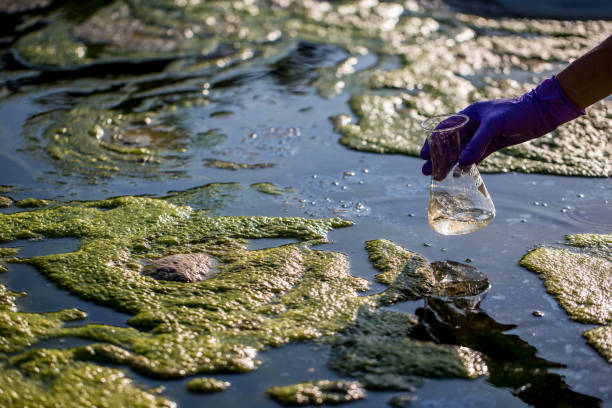Eutrophication is a phenomenon that occurs when excessive nutrients, such as nitrogen and phosphorus, enter freshwater ecosystems, leading to an overgrowth of algae and other aquatic plants. This process has significant impacts on the health and balance of freshwater ecosystems, affecting both the organisms within them and the overall ecological functioning.
Contents
What is Eutrophication?
Eutrophication refers to the excessive enrichment of water bodies with nutrients, primarily nitrogen and phosphorus. These nutrients often originate from human activities, such as agricultural runoff, sewage discharge, and the use of fertilizers. When these nutrients enter freshwater ecosystems, they stimulate the growth of algae and other aquatic plants, leading to the disruption of the natural balance.
Causes of Eutrophication
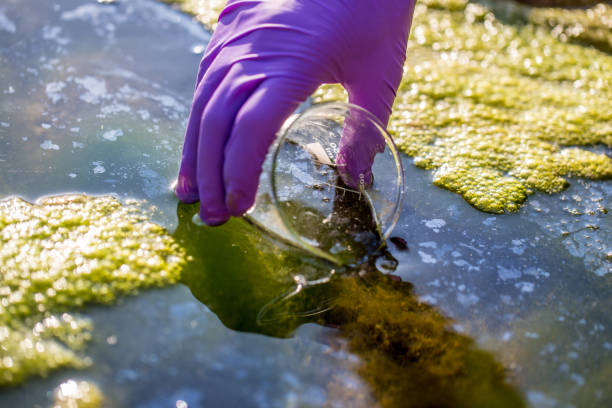
Eutrophication is primarily caused by human activities. The main sources of nutrient pollution include agricultural practices, industrial activities, urban runoff, and wastewater treatment plants. Fertilizers used in agriculture contribute a significant amount of nutrients, as excess fertilizers are often washed into nearby water bodies during rainfall. Additionally, the improper disposal of sewage and wastewater can introduce high levels of nutrients into freshwater ecosystems.
1: Algal Blooms
One of the most noticeable effects of eutrophication is the occurrence of algal blooms. The excessive nutrients in the water stimulate the rapid growth of algae, leading to their overabundance. These algal blooms can be harmful to the ecosystem as they block sunlight from reaching submerged plants, depleting oxygen levels in the water, and creating an imbalance in the ecosystem.
2: Oxygen Depletion
As algal blooms grow and eventually die, the process of decomposition consumes a large amount of oxygen. This excessive oxygen consumption leads to oxygen depletion in the water, resulting in what is commonly known as hypoxia. Oxygen-deprived water can have detrimental effects on aquatic organisms, causing fish and other aquatic species to suffocate and die.
3: Fish Kills
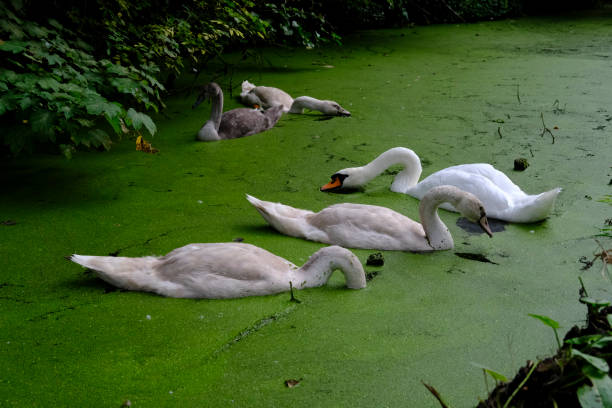
Due to the depletion of oxygen and the accumulation of toxic substances produced by algal blooms, fish kills are a common consequence of eutrophication. As oxygen levels drop, fish and other aquatic organisms struggle to survive. This can lead to mass mortality events, disrupting the balance of the ecosystem and affecting both the biodiversity and the fisheries that depend on healthy freshwater ecosystems.
4: Loss of Biodiversity
Eutrophication can result in a loss of biodiversity within freshwater ecosystems. As nutrient levels rise, certain species of algae and plants thrive while others struggle to survive. The dominance of specific species can lead to the decline or displacement of native plants and organisms, reducing the overall diversity and resilience of the ecosystem. This loss of biodiversity has far-reaching implications for the health and functioning of the ecosystem as a whole.
Read More: Top 5 Functions of the Skeletal System
5: Disruption of Food Chains
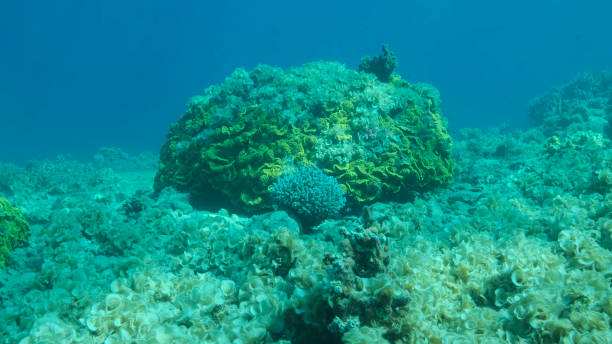
The disruption of nutrient cycles and the imbalance caused by eutrophication can also affect the food chains within freshwater ecosystems. Changes in nutrient availability and the abundance of certain species can impact the feeding relationships between organisms. For example, the decline of submerged plants due to excessive algal growth can directly impact herbivorous species that rely on them for food, affecting the entire food chain and ecosystem dynamics.
Prevention and Control Measures
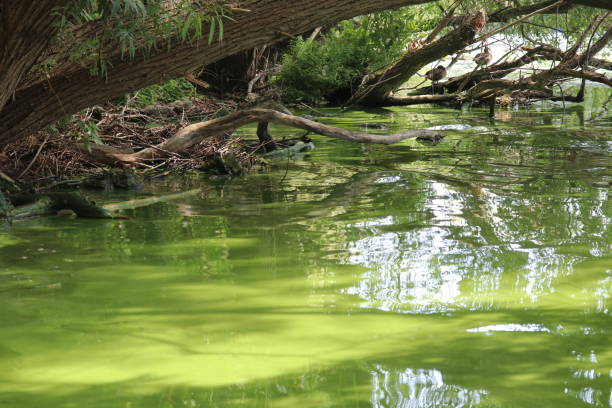
To prevent and control eutrophication, several measures can be implemented. These include improving agricultural practices to reduce nutrient runoff, implementing proper wastewater treatment processes, minimizing the use of fertilizers, and promoting responsible land use management. Additionally, raising awareness about the impacts of eutrophication and encouraging individual actions, such as reducing water usage and properly disposing of waste, can contribute to preventing further nutrient pollution.
Conclusion
Eutrophication has profound effects on freshwater ecosystems, altering their ecological balance and threatening the health and diversity of aquatic life. The excessive growth of algae, oxygen depletion, fish kills, loss of biodiversity, and disruption of food chains are among the significant consequences of eutrophication. By implementing preventive measures and adopting sustainable practices, we can mitigate the impacts of eutrophication and preserve the health and vitality of our freshwater ecosystems for future generations.
FAQs
How long does it take for a water body to become eutrophic?
The timeframe for a water body to become eutrophic can vary depending on various factors such as nutrient inputs, water flow rates, and the capacity of the ecosystem to absorb or process those nutrients. In some cases, it can take several years or even decades for a water body to become significantly eutrophic.
Can eutrophication affect human health?
Yes, eutrophication can indirectly affect human health. Algal blooms resulting from eutrophication can produce toxins that can contaminate drinking water sources. Ingesting or coming into contact with these toxins can pose risks to human health, causing symptoms such as gastrointestinal issues, skin irritation, or even more severe health problems.
What are the primary sources of nutrient pollution?
The primary sources of nutrient pollution contributing to eutrophication include agricultural activities, sewage and wastewater discharges, industrial processes, and stormwater runoff. These sources introduce excessive nutrients, such as nitrogen and phosphorus, into freshwater ecosystems, fueling the process of eutrophication.
Are all forms of eutrophication harmful?
While eutrophication generally has negative impacts on freshwater ecosystems, it’s important to note that not all forms of eutrophication are equally harmful. Some ecosystems have evolved to handle certain levels of nutrient enrichment naturally. However, excessive nutrient inputs can lead to imbalances and negative consequences for the ecosystem and its inhabitants.
How can individuals contribute to preventing eutrophication?
Individuals can contribute to preventing eutrophication by adopting environmentally friendly practices. These include reducing the use of fertilizers in gardening and agriculture, properly disposing of waste and chemicals, conserving water, and supporting initiatives that promote sustainable land use and water management. Small actions taken collectively can make a significant difference in reducing nutrient pollution and preserving the health of freshwater ecosystems.


